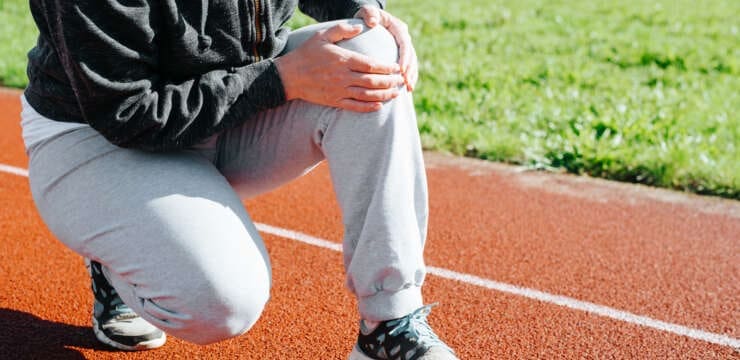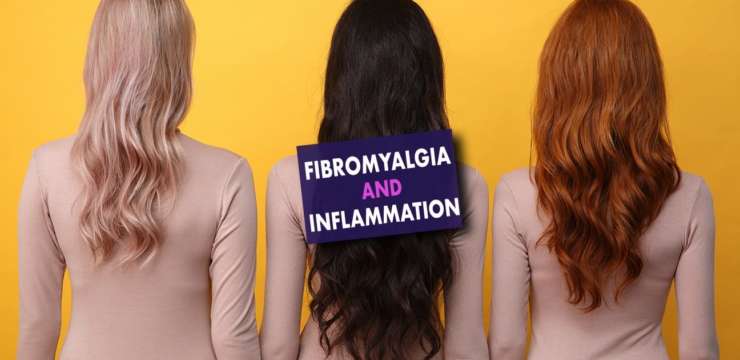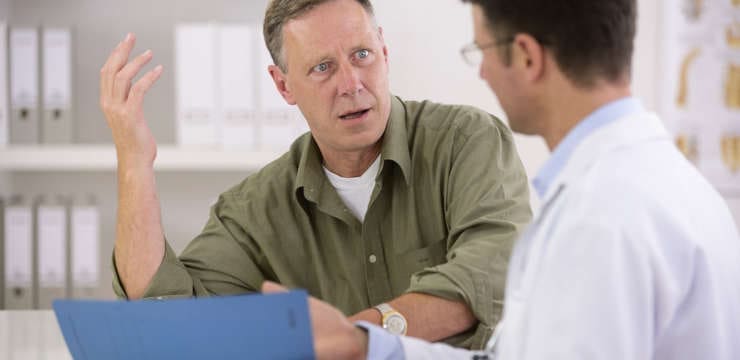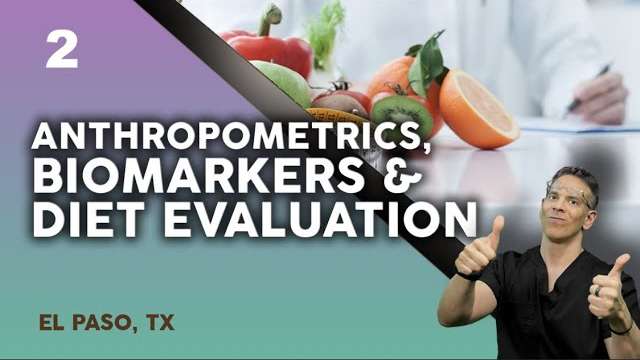
Understand the relationship between chiropractic care and five musculoskeletal issues for better health outcomes.
Table of Contents
Chiropractic Care for Common Musculoskeletal Issues: A Comprehensive Guide
Imagine lumbering through life like Herman Munster, with a creaky back and stiff joints from all that enthusiastic stomping around the Munster mansion. While Herman might’ve shrugged off his aches with a hearty laugh, many of us face similar musculoskeletal challenges that disrupt our daily routines. From back pain to wrist discomfort, these issues can make even simple tasks feel like climbing a steep and treacherous hill. Fortunately, chiropractic care offers a non-invasive, drug-free approach to managing these problems, helping us move with ease and maybe even a bit of Herman’s goofy charm. In this comprehensive guide, we’ll explore how chiropractic care can address five common musculoskeletal conditions—subluxation, scoliosis, disk degeneration, carpal tunnel syndrome, and Achilles tendonitis—while highlighting the expertise of Dr. Alexander Jimenez, a distinguished chiropractor in El Paso, Texas, particularly for personal injury cases. We’ll also sprinkle in some light-hearted humor to keep things fun, but rest assured, the conclusion will be serious, with a disclaimer to ensure you take this information responsibly.
Introduction: Understanding Musculoskeletal Issues and Chiropractic Solutions
Musculoskeletal issues affect the bones, muscles, joints, and connective tissues, often leading to pain, reduced mobility, and a lower quality of life. Whether it’s a nagging backache or a tingling wrist, these conditions can make everyday activities, such as working, exercising, or even sleeping, a challenge. According to research, musculoskeletal disorders are a leading cause of disability and healthcare costs worldwide (Vasquez, 2007). Chiropractic care, a holistic approach that focuses on spinal and joint alignment, aims to alleviate these issues without resorting to surgery or medications. By correcting misalignments and improving nervous system function, chiropractors help patients regain mobility and reduce pain.
In El Paso, Dr. Alexander Jimenez, DC, APRN, FNP-BC, is a prominent figure in this field, recognized for his expertise in treating personal injury victims. His practice integrates advanced imaging and diagnostic tools to tailor treatments, ensuring both recovery and robust legal documentation for accident-related injuries (Jimenez, n.d.). This article explores five prevalent musculoskeletal conditions, examining their impact on daily life, the clinical rationale for chiropractic care, and Dr. Jimenez’s unique contributions, all while maintaining an accessible tone suitable for a high school reading level.
Subluxation: The Misaligned Culprit
Definition
In chiropractic terms, a subluxation is a misalignment or dysfunction of the spine that may interfere with the nervous system’s ability to communicate effectively with the body. Unlike a medical subluxation, which involves a significant structural displacement visible on X-rays, chiropractic subluxation is often subtler, involving functional changes that may not be immediately apparent (World Health Organization, as cited in Wikipedia, 2003). Causes include trauma, poor posture, arthritis, or muscle spasms, all of which can throw the spine out of whack, much like Herman Munster’s lopsided gait after a long day at the funeral parlor.
Effects on Daily Routine
Subluxations can cause a range of symptoms, from localized back or neck pain to headaches, sciatica, or digestive issues resulting from nerve interference. For instance, a subluxation in the lower back might lead to pain radiating down the leg, making walking or standing for long periods difficult. A neck subluxation could trigger chronic headaches, impacting focus at school or work. These disruptions can turn daily tasks into a monster mash of discomfort, limiting productivity and enjoyment.
Clinical Rationale for Chiropractic Care
Chiropractic adjustments aim to correct subluxations by applying precise force to misaligned vertebrae, restoring proper alignment and nerve function. This can alleviate pain, improve mobility, and enhance overall health. Dr. Jimenez notes that subluxations often result from everyday stressors, such as poor posture or minor injuries, and regular adjustments can help prevent nerve impingement and promote natural healing (Jimenez, n.d.). While some critics argue that the concept of subluxation lacks robust scientific evidence (Keating et al., 2005), many patients report significant relief, suggesting a practical benefit even if the mechanisms are debated.
Insights from Research
Research on related topics, such as gluteal muscle activation, supports the idea that spinal misalignments can affect muscle function and movement patterns. A study found that stimulating proprioceptive mechanisms during walking increased gluteal activity, which can be compromised in individuals with low-back pain and subluxations (Bullock-Saxton et al., 1993). Chiropractic care, by addressing spinal alignment, may enhance neuromuscular control, aiding in pain relief and functional restoration.
References
- Bullock-Saxton, J. E., Janda, V., & Bullock, M. I. (1993). Reflex activation of gluteal muscles in walking: An approach to restoration of muscle function for patients with low-back pain. Spine, 18(6), 704–708. pubmed.ncbi.nlm.nih.gov/8516698/
- Jimenez, A. (n.d.). 5 things chiropractic treats. Dr. Alex Jimenez D.C., C.C.S.T. dralexjimenez.com/5-things-chiropractic-treats/
- Keating, J. C., Charlton, K. H., Grod, J. P., Perle, S. M., Sikorski, D., & Winterstein, J. F. (2005). Subluxation: Dogma or science? Chiropractic & Osteopathy, 13, 17. www.ncbi.nlm.nih.gov/pmc/articles/PMC1208927/
- Vasquez, A. (2007). Affirmation and rebirth of the chiropractic profession, part 1. Dynamic Chiropractic. dynamicchiropractic.com/article/52120-affirmation-and-rebirth-of-the-chiropractic-profession-part-1
Scoliosis: The Curvy Challenge
Definition
Scoliosis is an abnormal lateral curvature of the spine, often forming an “S” or “C” shape. It can result from trauma, congenital factors, or idiopathic causes, particularly in children and adolescents. Unlike Herman’s towering frame, which seemed immune to such curves, scoliosis can significantly affect posture and health.
Effects on Daily Routine
Scoliosis can cause back pain, uneven shoulders or hips, and, in severe cases, breathing difficulties due to reduced lung capacity. Adolescents may feel self-conscious about their appearance, which can impact their confidence. Daily activities such as sitting, standing, or participating in sports can become painful, limiting physical and social engagement.
Clinical Rationale for Chiropractic Care
Chiropractic care for scoliosis involves a comprehensive evaluation of posture and manual manipulation to improve spinal alignment and alleviate pain. While it may not fully correct severe curvatures, it can prevent progression and enhance function. Dr. Jimenez emphasizes the importance of posture correction and targeted adjustments to manage scoliosis symptoms effectively (Jimenez, n.d.). Studies suggest chiropractic rehabilitation can improve pain scales and functional ratings in scoliosis patients, particularly when combined with exercises (Morningstar, 2011).
Insights from Research
A retrospective analysis revealed that chiropractic care, encompassing spinal adjustments and exercises, resulted in improvements in pain and function for adult scoliosis patients (Morningstar, 2011). While high-quality randomized controlled trials are limited, the evidence suggests that chiropractic care is a safe and complementary approach for managing scoliosis symptoms, especially when initiated early.
References
- Jiménez, A. (n.d.). Chiropractic benefits sufferers scoliosis. El Paso Back Clinic. www.elpasobackclinic.com/chiropractic-benefits-sufferers-scoliosis/
- Morningstar, M. W. (2011). Outcomes for adult scoliosis patients receiving chiropractic rehabilitation: A 24-month retrospective analysis. Journal of Chiropractic Medicine, 10(4), 179–184. www.ncbi.nlm.nih.gov/pmc/articles/PMC3259989/
Movement Medicine: Chiropractic Care- Video
Disk Degeneration: The Wear-and-Tear Woe
Definition
Disk degeneration, often referred to as degenerative disk disease (DDD), involves the natural wear and tear of intervertebral disks, resulting in pain, stiffness, and nerve compression. Common in people over 55, it’s like the spine’s version of Herman’s creaky old coffin, wearing out over time.
Effects on Daily Routine
DDD can cause chronic back or neck pain, stiffness, and reduced mobility, making tasks such as bending, lifting, or sitting for extended periods challenging. For example, a degenerated disk in the lower back might limit a person’s ability to carry groceries or sit through a movie, significantly impacting daily life.
Clinical Rationale for Chiropractic Care
Chiropractic care uses spinal manipulation, decompression therapy, and physical therapy to reduce tension and stress on degenerated disks. These techniques aim to improve spinal alignment, alleviate pain, and enhance mobility. Dr. Jimenez highlights that chiropractic treatments can help manage DDD by reducing pressure on affected disks (Jimenez, n.d.). A case study of a geriatric patient with DDD showed significant pain reduction and improved mobility after chiropractic care using Activator Methods (Daniels & Morrell, 2012).
Insights from Research
Research indicates that chiropractic care is generally safe for early-stage DDD, provided there are no severe herniations or nerve involvement (Advantage Spinal Dynamics, 2024). The role of mitochondria in osteoarthritis, a related condition, suggests that cellular health impacts joint degeneration, and chiropractic care may support overall musculoskeletal health by improving biomechanics (Pizzorno et al., 2011).
References
- Advantage Spinal Dynamics & Innovative Medicine. (2024). How chiropractic treatment helps with degenerative disc disease. www.advantageinnovativemedicine.com/blog/how-chiropractic-treatment-helps-with-degenerative-disc-disease
- Daniels, C. J., & Morrell, A. P. (2012). Chiropractic management of a veteran with lower back pain associated with diffuse idiopathic skeletal hypertrophy and degenerative disk disease. Journal of Chiropractic Medicine, 11(4), 293–299. www.ncbi.nlm.nih.gov/pmc/articles/PMC3706700/
- Jimenez, A. (n.d.). 5 things chiropractic treats. Dr. Alex Jimenez D.C., C.C.S.T. dralexjimenez.com/5-things-chiropractic-treats/
- Pizzorno, J. E., Katzung, B. G., & Murray, M. T. (2011). The role of mitochondria in osteoarthritis. Nature Reviews Rheumatology, 7(2), 89–94. pubmed.ncbi.nlm.nih.gov/21119607/
Carpal Tunnel Syndrome: The Wrist’s Woe
Definition
Carpal tunnel syndrome (CTS) occurs when the median nerve in the wrist is compressed, causing numbness, tingling, and weakness in the hand. Often linked to repetitive motions, it’s like Herman trying to type on a tiny keyboard with his oversized hands, leading to discomfort.
Effects on Daily Routine
CTS can hinder tasks that require fine motor skills, such as typing, writing, or grasping objects. Pain and numbness may disrupt sleep, and weakness can make it hard to hold items, affecting work and hobbies. For instance, a cashier or typist might struggle to perform their job efficiently.
Clinical Rationale for Chiropractic Care
Chiropractors treat CTS with wrist and spinal adjustments, soft tissue therapies, and exercises to reduce nerve compression and inflammation, thereby alleviating symptoms. Dr. Jimenez advocates for physical therapy and stretches to promote recovery (Jimenez, n.d.). A case study demonstrated that chiropractic manipulation improved grip strength and normalized nerve function in a patient with CTS (Davis et al., 1994).
Insights from Research
Chiropractic care is recognized as a non-invasive alternative to surgery or medications for CTS. Studies have shown that manual adjustments and soft tissue therapies can relieve pressure on the median nerve, thereby improving symptoms (Metrowest Spine Clinic, 2016). The holistic approach of chiropractic care, addressing both wrist and spinal alignment, supports long-term relief.
References
- Davis, P. T., Hulbert, J. R., Kassak, K. M., & Meyer, J. J. (1994). Chiropractic manipulation in carpal tunnel syndrome. Journal of Manipulative and Physiological Therapeutics, 17(4), 246–249. pubmed.ncbi.nlm.nih.gov/8046280/
- Jiménez, A. (n.d.). Carpal tunnel pain treatment. Dr. Alex Jimenez D.C., C.C.S.T. www.dralexjimenez.com/carpal-tunnel-pain-treatment/
- Metrowest Spine Clinic. (2016). Four Ways Chiropractic Can Help with Carpal Tunnel Syndrome. metrowestspineclinic.com/four-ways-chiropractic-can-help-carpal-tunnel-syndrome/
Achilles Tendonitis: The Heel’s Hassle
Definition
Achilles tendonitis is an inflammation of the Achilles tendon caused by overuse, commonly found in runners and athletes. It causes pain and stiffness in the heel, much like Herman might feel after chasing Spot around the Munster backyard.
Effects on Daily Routine
This condition can make walking, running, or climbing stairs painful, limiting physical activities. Swelling and tenderness may persist, affecting mobility and potentially leading to complications, such as tendon rupture, if left untreated.
Clinical Rationale for Chiropractic Care
Chiropractic care for Achilles tendonitis involves adjustments to the spine, hips, and ankles to correct biomechanical issues, in conjunction with soft tissue therapies such as Active Release Technique (ART) to reduce inflammation and scar tissue. Dr. Jimenez emphasizes maintaining body function to prevent complications (Jimenez, n.d.). Chiropractic care can enhance circulation and mobility, thereby aiding in recovery.
Insights from Research
Chiropractic treatments, including adjustments and soft tissue work, have shown promise in managing Achilles tendonitis by addressing misalignments that contribute to tendon stress (Stamford Spine, 2024). The use of techniques like Graston or ART can enhance healing by improving tissue health (Bend Total Body Chiropractic, 2021).
References
- Bend Total Body Chiropractic. (2021). Achilles tendonitis treatment. bendtotalbodychiropractic.com/chiropractic-services/chiropractor/achilles-tendonitis/
- Jimenez, A. (n.d.). 5 things chiropractic treats. Dr. Alex Jimenez D.C., C.C.S.T. dralexjimenez.com/5-things-chiropractic-treats/
- Stamford Spine. (2024). How chiropractic therapy helps Achilles tendonitis. stamfordspine.com/how-chiropractic-therapy-helps-achilles-tendonitis/
Personal Injury Cases in El Paso: Dr. Jimenez’s Expertise
In El Paso, personal injury cases, such as those from car accidents or workplace incidents, often involve musculoskeletal injuries like whiplash, back pain, or joint dysfunction. Dr. Alexander Jimenez is a distinguished practitioner in this field, known for his comprehensive approach to treatment and documentation. He utilizes advanced imaging techniques (e.g., X-rays, MRIs) and diagnostic evaluations to accurately assess injuries accurately, ensuring the development of tailored treatment plans. His dual-scope procedures—combining clinical care with detailed medical reports—make him a vital liaison between patients and legal systems, supporting recovery and legal claims (Health Coach Clinic, n.d.).
Dr. Jimenez’s expertise extends beyond treatment to include collaboration with legal professionals, providing documentation that links injuries to accidents. This is particularly crucial in personal injury cases, where accurate medical evidence can significantly impact the outcome of claims. His practice, accessible at healthcoach.clinic/ and detailed on his LinkedIn profile (www.linkedin.com/in/dralexjimenez/), emphasizes holistic care, integrating chiropractic adjustments, physical therapy, and lifestyle recommendations to optimize patient outcomes.
Conclusion
Chiropractic care offers a promising, non-invasive approach to managing subluxation, scoliosis, disk degeneration, carpal tunnel syndrome, and Achilles tendonitis. By addressing misalignments and promoting natural healing, chiropractors like Dr. Alexander Jimenez help patients regain mobility and reduce pain, improving their quality of life. In El Paso, Dr. Jimenez’s expertise in personal injury cases ensures that victims receive both effective treatment and robust legal support. While chiropractic care shows significant benefits, individual results may vary, and professional consultation is essential.
Disclaimer: This blog post is for informational purposes only and should not be taken as medical advice. Always consult with a qualified healthcare professional for diagnosis and treatment of any medical condition.
References
- Advantage Spinal Dynamics & Innovative Medicine. (2024). How chiropractic treatment helps with degenerative disc disease. www.advantageinnovativemedicine.com/blog/how-chiropractic-treatment-helps-with-degenerative-disc-disease
- Bend Total Body Chiropractic. (2021). Achilles tendonitis treatment. bendtotalbodychiropractic.com/chiropractic-services/chiropractor/achilles-tendonitis/
- Bullock-Saxton, J. E., Janda, V., & Bullock, M. I. (1993). Reflex activation of gluteal muscles in walking: An approach to restoration of muscle function for patients with low-back pain. Spine, 18(6), 704–708. pubmed.ncbi.nlm.nih.gov/8516698/
- Daniels, C. J., & Morrell, A. P. (2012). Chiropractic management of a veteran with lower back pain associated with diffuse idiopathic skeletal hypertrophy and degenerative disk disease. Journal of Chiropractic Medicine, 11(4), 293–299. www.ncbi.nlm.nih.gov/pmc/articles/PMC3706700/
- Davis, P. T., Hulbert, J. R., Kassak, K. M., & Meyer, J. J. (1994). Chiropractic manipulation in carpal tunnel syndrome. Journal of Manipulative and Physiological Therapeutics, 17(4), 246–249. pubmed.ncbi.nlm.nih.gov/8046280/
- Health Coach Clinic. (n.d.). About Dr. Alex Jimenez. healthcoach.clinic/
- Jimenez, A. (n.d.). 5 things chiropractic treats. Dr. Alex Jimenez D.C., C.C.S.T. dralexjimenez.com/5-things-chiropractic-treats/
- Jiménez, A. (n.d.). Carpal tunnel pain treatment. Dr. Alex Jimenez D.C., C.C.S.T. www.dralexjimenez.com/carpal-tunnel-pain-treatment/
- Jiménez, A. (n.d.). Chiropractic benefits sufferers scoliosis. El Paso Back Clinic. www.elpasobackclinic.com/chiropractic-benefits-sufferers-scoliosis/
- Keating, J. C., Charlton, K. H., Grod, J. P., Perle, S. M., Sikorski, D., & Winterstein, J. F. (2005). Subluxation: Dogma or science? Chiropractic & Osteopathy, 13, 17. www.ncbi.nlm.nih.gov/pmc/articles/PMC1208927/
- Metrowest Spine Clinic. (2016). Four Ways Chiropractic Can Help with Carpal Tunnel Syndrome. metrowestspineclinic.com/four-ways-chiropractic-can-help-carpal-tunnel-syndrome/
- Morningstar, M. W. (2011). Outcomes for adult scoliosis patients receiving chiropractic rehabilitation: A 24-month retrospective analysis. Journal of Chiropractic Medicine, 10(4), 179–184. www.ncbi.nlm.nih.gov/pmc/articles/PMC3259989/
- Pizzorno, J. E., Katzung, B. G., & Murray, M. T. (2011). The role of mitochondria in osteoarthritis. Nature Reviews Rheumatology, 7(2), 89–94. pubmed.ncbi.nlm.nih.gov/21119607/
- Stamford Spine. (2024). How chiropractic therapy helps Achilles tendonitis. stamfordspine.com/how-chiropractic-therapy-helps-achilles-tendonitis/
- Vasquez, A. (2007). Affirmation and rebirth of the chiropractic profession, part 1. Dynamic Chiropractic. dynamicchiropractic.com/article/52120-affirmation-and-rebirth-of-the-chiropractic-profession-part-1
- Wikipedia. (2003). Vertebral subluxation. en.wikipedia.org/wiki/Vertebral_subluxation
Disclaimers
Professional Scope of Practice *
The information herein on "Chiropractic Care for Pain Relief for Five Musculoskeletal Issues" is not intended to replace a one-on-one relationship with a qualified health care professional or licensed physician and is not medical advice. We encourage you to make healthcare decisions based on your research and partnership with a qualified healthcare professional.
Blog Information & Scope Discussions
Welcome to El Paso's wellness blog, where Dr. Alex Jimenez, DC, FNP-C, a board-certified Family Practice Nurse Practitioner (FNP-C) and Chiropractor (DC), presents insights on how our team is dedicated to holistic healing and personalized care. Our practice aligns with evidence-based treatment protocols inspired by integrative medicine principles, similar to those found on dralexjimenez.com, focusing on restoring health naturally for patients of all ages.
Our areas of chiropractic practice include Wellness & Nutrition, Chronic Pain, Personal Injury, Auto Accident Care, Work Injuries, Back Injury, Low Back Pain, Neck Pain, Migraine Headaches, Sports Injuries, Severe Sciatica, Scoliosis, Complex Herniated Discs, Fibromyalgia, Chronic Pain, Complex Injuries, Stress Management, Functional Medicine Treatments, and in-scope care protocols.
Our information scope is limited to chiropractic, musculoskeletal, physical medicine, wellness, contributing etiological viscerosomatic disturbances within clinical presentations, associated somato-visceral reflex clinical dynamics, subluxation complexes, sensitive health issues, and functional medicine articles, topics, and discussions.
We provide and present clinical collaboration with specialists from various disciplines. Each specialist is governed by their professional scope of practice and their jurisdiction of licensure. We use functional health & wellness protocols to treat and support care for the injuries or disorders of the musculoskeletal system.
Our videos, posts, topics, subjects, and insights cover clinical matters, issues, and topics that relate to and directly or indirectly support our clinical scope of practice.*
Our office has reasonably attempted to provide supportive citations and has identified the relevant research studies or studies supporting our posts. We provide copies of supporting research studies available to regulatory boards and the public upon request.
We understand that we cover matters that require an additional explanation of how they may assist in a particular care plan or treatment protocol; therefore, to discuss the subject matter above further, please feel free to ask Dr. Alex Jimenez, DC, APRN, FNP-BC, or contact us at 915-850-0900.
We are here to help you and your family.
Blessings
Dr. Alex Jimenez DC, MSACP, APRN, FNP-BC*, CCST, IFMCP, CFMP, ATN
email: coach@elpasofunctionalmedicine.com
Licensed as a Doctor of Chiropractic (DC) in Texas & New Mexico*
Texas DC License # TX5807
New Mexico DC License # NM-DC2182
Licensed as a Registered Nurse (RN*) in Texas & Multistate
Texas RN License # 1191402
ANCC FNP-BC: Board Certified Nurse Practitioner*
Compact Status: Multi-State License: Authorized to Practice in 40 States*
Graduate with Honors: ICHS: MSN-FNP (Family Nurse Practitioner Program)
Degree Granted. Master's in Family Practice MSN Diploma (Cum Laude)
Dr. Alex Jimenez, DC, APRN, FNP-BC*, CFMP, IFMCP, ATN, CCST
My Digital Business Card






